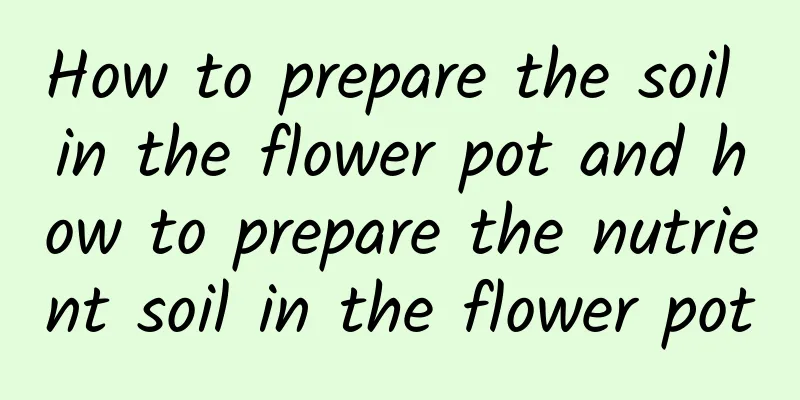Ten taboos for growing strawberries

|
Strawberry is a perennial herb and one of the most popular fruits. It is cultivated in all parts of my country, with a wide distribution area and considerable planting returns. In the process of growing strawberries , you should also pay attention to some taboos. Here, the editor will introduce the top ten taboos of growing strawberries. Let’s take a look. 1. Avoid using seeds to grow seedlings Seedlings grown from seeds are called seedlings. Seedlings are prone to variation and have unstable traits. They often lose the excellent characteristics of the original variety, have poor quality and low yield. Therefore, this method of seedling cultivation is not suitable for production. 2. Avoid single variety In the same area, if a single strawberry variety is infected with diseases, especially viral diseases, it will cause significant losses. Therefore, it is not advisable to plant only one variety in production. It is necessary to consider comprehensive factors such as local climate and environmental conditions, cultivation methods, and the ability to resist diseases, insect pests and adversities. Generally, 1-2 main varieties should be selected, and 2-3 supporting varieties. The planting area of the main varieties should account for more than 70%. 3. Avoid planting density that is too high or too low If the planting density is too high and the leaf area index is high, the middle and lower parts of the plants will be shaded, which can easily lead to low soil temperature, affecting root vitality and causing the breeding of pests and diseases. If the planting density is too small, the fruit per plant will be larger and of better quality, but the goal of high yield cannot be achieved because the number of plants per unit area is insufficient. 4. Avoid planting strawberry seedlings too deep or too shallow If the seeds are planted too deeply, the heart of the seedling will be buried, causing heart rot and death; if the seeds are planted too shallowly, the roots and stems will be exposed, causing the seedlings to dry out due to water loss. To ensure the survival of the plants, the key is to control the depth and provide sufficient water. It is best to plant them too deep without burying the heart and too shallow without exposing the roots. The normal depth is when the base of the seedling is level with the soil surface. 5. Avoid continuous cropping for many years In order to save labor, some farmers often continue cropping for many years without changing the fields, which leads to weak growth, reduced yield, poor quality and the breeding of pests and diseases. Generally, it is advisable to move to another place and replant two years after fruiting, but strawberries should not be planted in fields where the previous crop was Solanaceae crops, to avoid virus infection and the occurrence of yellow dwarf disease and other hazards. 6. Avoid excessive use of nitrogen fertilizers Excessive application of nitrogen fertilizers will greatly increase the leaf area of strawberries, causing shade in the fields, reducing ventilation and light transmittance between plants, leading to a decrease in the number of flowers, smaller fruits, and inducing a large number of diseases and pests. 7. Avoid leaving too many flowers and fruits The inflorescence of strawberry is a cyme, which can bloom many times from the beginning of flowering to the end of fruit picking. Each inflorescence can produce 5-30 flowers each time. If too many fruits are left, they will compete for nutrients, increasing the number of ineffective fruits and reducing the commercial fruits, which will affect the output value. Measures should be taken according to different varieties. Only 5 to 10 fruits that bloom first and grow healthily should be selected for each plant at a time, and the rest should be picked off. 8. Avoid the abuse of insecticides and fungicides Pesticides should be used according to the symptoms and not blindly, so as to avoid excessive pesticide residues. It is necessary to strengthen field management, such as adopting agronomic measures such as cleaning the fields, manually removing dead branches, diseased and insect-infested leaves, and diseased fruits, and centralized burning to prevent the occurrence of diseases and insect pests. Observe the occurrence of diseases and insect pests in the field, promptly treat the areas where diseases and insect pests occur to prevent their spread, and put an end to the blind use of large amounts of pesticides over large areas. 9. Avoid excessive watering When transplanting, the most suitable soil moisture content for strawberry beds is 50%-60%. It should not be too wet, and the water content should be avoided to be too high. At the same time, small amounts of water should be applied when transplanting, and large amounts of water should not be used for flooding, so as to avoid damaging the roots, resulting in difficulty in rooting, and thus reducing the survival rate of the seedlings. 10. Avoid excessive temperature Before planting strawberries, you need to use tools to measure the surface temperature. The most suitable ground temperature for strawberry growth is around 20℃. The surface temperature cannot be lower than 10℃ or higher than 30℃, otherwise strawberries will not grow in the soil, so strawberries are rarely planted in summer and winter. The above are the top ten taboos for growing strawberries. When growing strawberries, you should pay attention to the above ten taboos to ensure the yield and quality of strawberries and avoid unnecessary effects.
|
<<: How to cultivate and manage peony, peony cultivation and management
>>: What is the best soil for potted peony and how to prepare the soil
Recommend
What is the best season to plant ginseng fruit?
Ginseng fruit planting season and time The season...
Can pearl spider plant be hydroponically cultivated? Hydroponics methods and precautions
Can pearl spider plant be hydroponically cultivat...
What are the different varieties of daylilies?
Daylily (Hemerocallis fulva) Native to China, the...
How to propagate the succulent Huangli
Leaf cuttings Leaf cuttings are the simplest meth...
Several common winter deciduous trees
Poplar: Poplar is a deciduous tree belonging to t...
Growing flowers also depends on "the right time, the right place and the right people"
Lighting issues When growing flowers, you must &q...
How to identify Guanshan cherry
1. Appearance The Guanshan cherry blossoms and le...
Cultivation methods and precautions of alpine banyan
1. Soil The mountain banyan has very low soil req...
Winter maintenance methods for fruit-bearing flowers
temperature According to the cold resistance of f...
Can I take cuttings of hydrangeas in winter?
1. Is it possible to take cuttings in winter? The...
How to grow green radish in potted plants
Green radish potted plant maintenance The growing...
The secret to raising succulents: they will get extremely fat in 3 weeks. The more you abuse them, the crazier they will grow!
Control type 1: Soil control method If you want t...
How to grow medlar
1. Soil Loose and fertile soil should be used for...
Can kapok grow in the north? Is it cold-resistant?
1. Can kapok grow in the north? Kapok cannot grow...
How to water the lucky tree
1. Watering requirements The lucky charm plant re...









